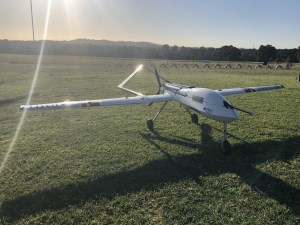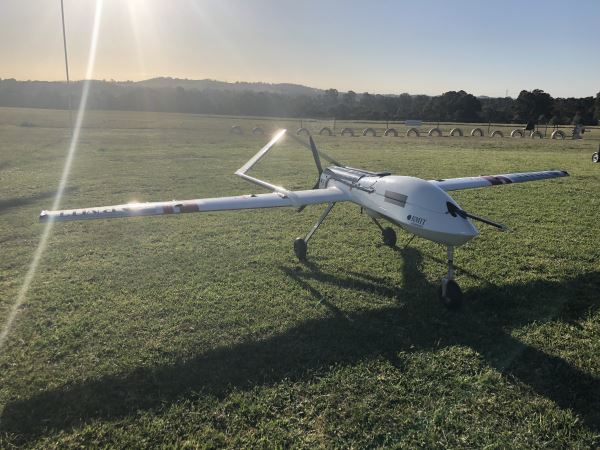Melbourne has been selected as a pilot city to trial Uber’s innovative urban air mobility concept, Uber Air.
The pilot programme starts next year, with an official launch expected from 2023.
Uber will partner with key Australian companies Macquarie, Telstra and owner and operator of Westfield in Australia and New Zealand Scentre Group.
It will also work with key existing partners, including Melbourne Airport, to support the infrastructure and telecommunications needed to create a successful urban aviation network.
“Australian governments have adopted a forward-looking approach to ridesharing and future transport technology,” says Susan Anderson, Regional General Manager for Uber in Australia, New Zealand and North Asia.
“This, coupled with Melbourne’s unique demographic and geospatial factors, and culture of innovation and technology, makes Melbourne the perfect third launch city for Uber Air. We will see other Australian cities following soon after.”
Melbourne is ready
Dr Matthew Marino, UAS Research Team Co-Leader and Lecturer and Researcher in the School of Engineering at RMIT University, Melbourne says the aircraft will work in a similar way to a helicopter. It will have a pilot to begin with and use heliports.
“Melbourne is ideal city for this kind of trial as it has quite a bit of existing infrastructure, such as the helipad along the Yarra River in Melbourne CBD,” says Dr Marino. “It is going to be instrumental.”
Likewise, Melbourne’s river system will allow aircrafts to venture into the city – the river will provide entry to and from the city and will be safer than flying over buildings, adds Dr Marino.
Melbourne’s infrastructure is not the only reason it is ready for Uber Air. According to Dr Marino, aircraft development and legislation is “accelerating quite rapidly.”
“There was a call out 4/5 months ago to gather information about technical reports and research to aid the regulation forming,” says Dr Marino. “The Civil Aviation Safety Authority (CASA) has released a white paper to universities to gauge the interest and the available research on drones in heavily populated cities.”
Likewise, there is a heavy interest from manufacturers regarding the pilot, with companies reaching out to further develop the aircraft. “There’s a lot of buy in from industry. They see it as a booming market,” says Dr Marino.
“The technology is ready,” he adds, “it just needs to be regulated and be safe around people.”
Vision for the future
Uber Air aims to open up air mobility and tackle transport congestion on the roads.
According Uber Australia, the goal is to provide “safe, quiet electric vehicles transporting tens of thousands of people across cities for the same price as an UberX trip over the same distance.”
Congestion currently costs Australia $16.5 billion annually and increasing to around $30 billion by 2030.
However, time will tell if Uber Air remedies the city’s congestion problem. “[It] depends how far they get with it,” says Dr Marino. “If it is autonomous, then the trips become cheap. And when the trips are cheap people will use them (the helicopters).”
It all comes down to the business model, explains Dr Marino. “Once the pilot goes, the cost goes down,” he says. “The next step is to trial the autonomous mode on an electric aircraft.”
If the technology is more expensive than taxis, people will be less inclined to use them and it will remain a mode of transport reserved for the more elite. The technology must be made accessible.
Safety matters
This then poses another question regarding how successful user uptake will be.
“The aircraft will have an electric motor and feature a simpler system, and thus will be a safer system,” explains Dr Marino. Having an electric motor allows for more than one engine, making the technology safer than the traditional helicopter.
“With helicopter, when the engine goes, it [the helicopter] goes into a critical scenario, but these designs have at least four engines so you can still land safely,” says Dr Marino. However, this still needs to be proven appropriately, he adds.
The base software, technology and infrastructure of Uber’s aerial offering is drones, points out Dr Marino. Drones have proven that even with a failure, the drone can still land properly.
“That is what the Uber Air trials are aiming to do – prove the reliability of the technology to generate consumer interest and convince consumers,” says Dr Marino.
Dr Marino gives an example of how accessible and simple the technology is, noting that RMIT built a drone capable of carrying a single pilot with a budget with less than $100,000.
“Before, it was the battery technology that was holding back long-range trips, but it can do that now,” says Dr Marino. “That is why trials are being pushed forward – just need to sort logistics, safety and regulations.”
Next steps
According to Dr Marino, we are in the “golden age” of unmanned aircraft technology, and no one knows how to regulate it.
“We know what the regulations are for planes but because (with Uber Air) it’s an electric aircraft carrying people, we have no framework,” he explains. “It’s hard to say who is going to do it – might be the Australian or American regulatory system.” Dr Marino believes it will most likely be developed hand in hand.
However, he notes that civil engineering companies are already asking for advice on what they need to consider when planning new buildings to account for potential helipads and entry ways for aircrafts.
So, it seems a sci-fi-esque future filled with flying taxis is on the cards for us.
Drones and logistics
Dr Marino says that passenger drone projects are harder due to funding and research involved and points out there is more in the field of delivery, including more set regulations.
For example, RMIT teaches an Unmanned Aircraft Systems course that teaches students how to fly and operate drones.
“Students build new engines and drones and find new ways to use them for different things– and then see what they can do outside that,” says Dr Marino.
Dr Marino is currently overseeing a new project to further develop drone delivery in the outback and cut down the cost of making deliveries.
The drone will carry multiple packages, such as medical devices and machinery parts. The drone will not need to land and will lower down the packages with a sturdy metal wire.


